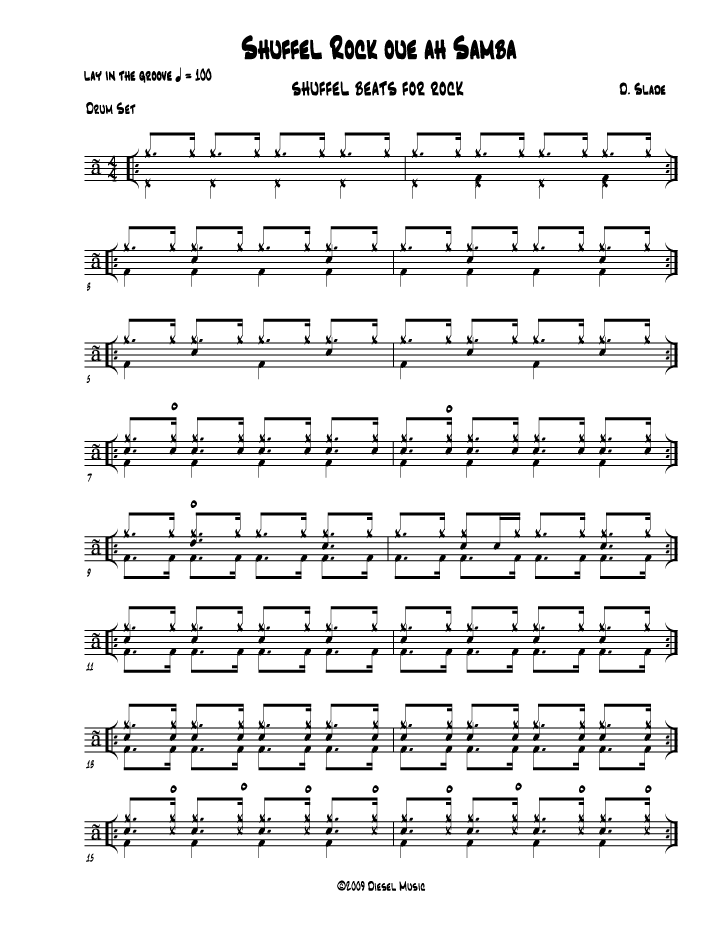

Paradiddle 2 If you play some of the right-hand beats of the paradiddle on the bass drum and the left-hand beats on the snare while playing a steady eighth-note closed hi-hat pattern with your right hand, you can use the paradiddle as a rhythm pattern.īass and Snare 1 Watch out for the dotted bass drum rhythm on beat 1. Practice the following examples to get your kit balance right. In the following rhythms, the bass and snare drum should be equal in volume, with the hi-hat pattern, a little lower in volume, ticking away keeping time.

When playing all these rhythms, it’s important to get the internal balance of the kit right, regardless of whether it’s miked-up. Sing the bass drum pattern, and imagine a line played by the bass guitar.Įxample 10 Next is a similar example to the previous pattern but with a little more actvity. The following examples will help you lock in a solid groove.Įxample 9 This is a good example for getting the bass and drums to work together. In order to achieve this groove, your bass drum pattern should closely follow the notes being played by the bass guitar, or vice versa. The bass and drums must “lock in” to form a solid groove for the other members to play and sing over. No matter how good the individual musicians may be, the band will only be as good as the rhythm section allows.

When playing these rhythms, make sure the bass drum beats fall exactly in time with the eighth-note hi-hat pattern to produce a tight, funky feel.Įxample 7 Notice the eighth notes on beat 3.Įxample 8 Eighth notes are on beats 1 and 3.īass and Drum Groove The foundation of any good hip-hop band or record is the rhythm section, which consists of the bass and drums. It will help you play each note exactly in the right place.Įxample 5 The syncopation falls on the A after beat 2 and on the E after beat 3.Įxample 6 The syncopation falls on the E of beat 1 and the A of beat 2.īass Drum Syncopation In the previous six examples, the bass drum has played only a quarter-note pattern, but in the next six syncopated rhythms, the bass drum gets busier with more varied patterns. When playing these rhythms for the first time, always count the beats aloud (written above each rhythm) as you play. Snare Drum Syncopation The next two examples are syncopated snare beats. When playing these beats, make sure your hihat plays a constant and even eighth-note rhythm and does not follow the snare pattern.Įxample 3 The syncopated note comes on the E of beat 1.Įxample 4 The syncopated snare falls on the A of beat 4. This is called a syncopated beat because it falls between the eighth-note hi-hat pattern and not with the hi-hat note.Įxample 2 The syncopated snare beat falls on the A before beat 3.

Keep the hihat steady, and try to avoid slowing down during the more difficult parts.Įxample 1 The syncopated snare beat falls on the E after beat 3. Syncopation is the shifting of accents from where they naturally occur (on the beat) to the offbeat.īasic Syncopation Examples To get you started, here are six relatively easy beats with syncopated snare drum rhythms. Syncopation for Hip-Hop Drums Most hip-hop beats are based on syncopated bass and snare drum patterns.


 0 kommentar(er)
0 kommentar(er)
